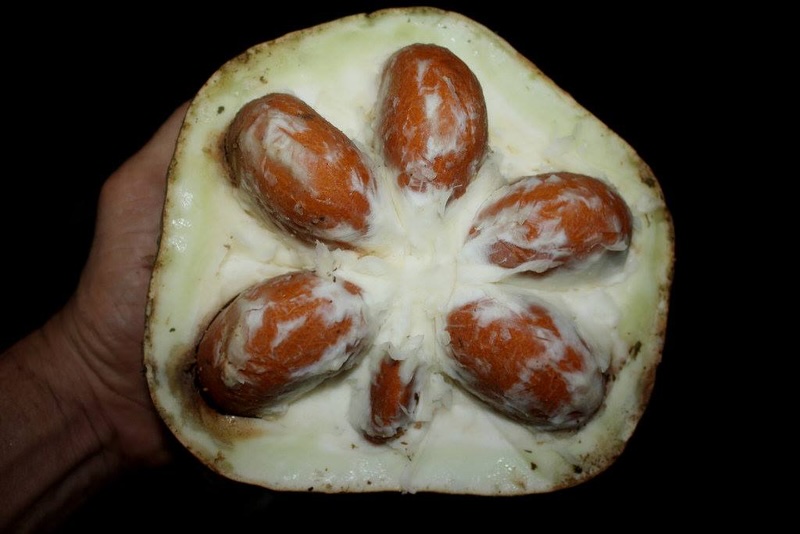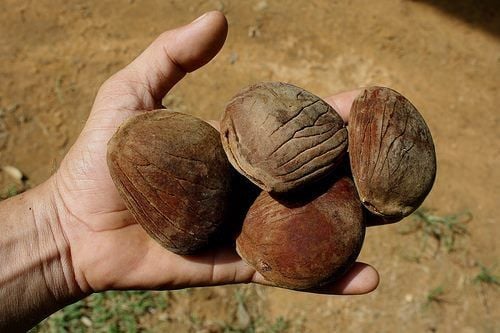The Mountains of Vietnam: A Tasty Adventure
Vietnam’s mountains are home to an array of fascinating fruits with peculiar names and distinct flavors, unknown to many city dwellers. One such fruit is the “dai hai,” a unique find.
Dai hai, also known as “duy qua,” is a member of the gourd family, Cucurbitaceae, with the scientific name Godgsonia macrocarpa. This plant is a climbing vine, with heart-shaped leaves, often divided into three or five lobes. The top side of the leaves is a lush green, while the underside is paler.
The dai hai fruit is spherical, roughly the size of a human head, with ten to twelve ridges. Its appeal lies in the white, fleshy interior. Each fruit typically contains six to twelve seeds, depending on its size, and these seeds are flattened and oval-shaped.

The dai hai fruit is spherical and roughly the size of a human head, with ten to twelve ridges.
Dai hai vines are typically found growing wild in primary forests and are rarely seen in lowland areas. In Vietnam, this plant is mainly discovered in provinces such as Vinh Phuc, Thai Nguyen, Thanh Hoa, Nghe An, and Ha Tinh, as well as several other mountainous regions. The ideal harvest time for dai hai fruit falls between November and February each year.
Locals collect the fruit for culinary purposes and extract oil from the seeds, as they have a high oil content, ranging from 60-65%. The oil is light yellow, odorless, and tasteless, making it an excellent substitute for pork fat in cooking. However, the seeds have a bitter taste when consumed raw due to the presence of certain alkaloids or glucosides.

Locals harvest dai hai fruit for culinary purposes and to extract oil from the seeds.
In addition to cooking, mountain tribes utilize the oil from dai hai seeds for lighting. Sometimes, the seeds are roasted, crushed, and mixed with salt to create a tasty condiment similar to sesame or peanut salt.
While dai hai was once obscure, it has gained popularity in recent years due to a growing appreciation for unique forest fruits. Consumers and tourists alike seek out dai hai seeds and oil for their distinctive flavor. Currently, a liter of dai hai oil costs approximately 80,000 VND, providing a significant income for people in mountainous areas.

A liter of dai hai oil currently costs around 80,000 VND.
Hoai Thuong, a resident of Cau Giay, Hanoi, shared, “I discovered dai hai and its oil during my visit to Thai Nguyen. This natural oil has a rich, nutty flavor and offers numerous health benefits. Knowing its usefulness, I started buying it to cook stir-fried dishes.”
Beyond its culinary uses, every part of the dai hai plant contributes to health and well-being. The vine and leaves reduce inflammation, while the seeds act as a laxative and treat prickly heat. The bitter-sweet tasting seed kernels contain fats and have a cooling effect, making them excellent for heat reduction and disinfection.






























